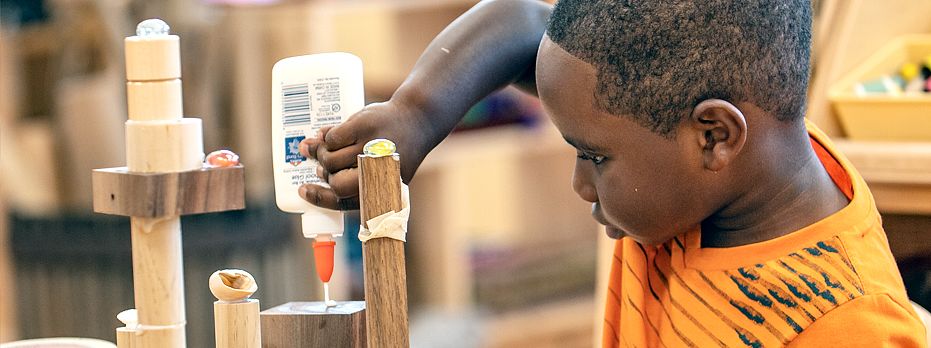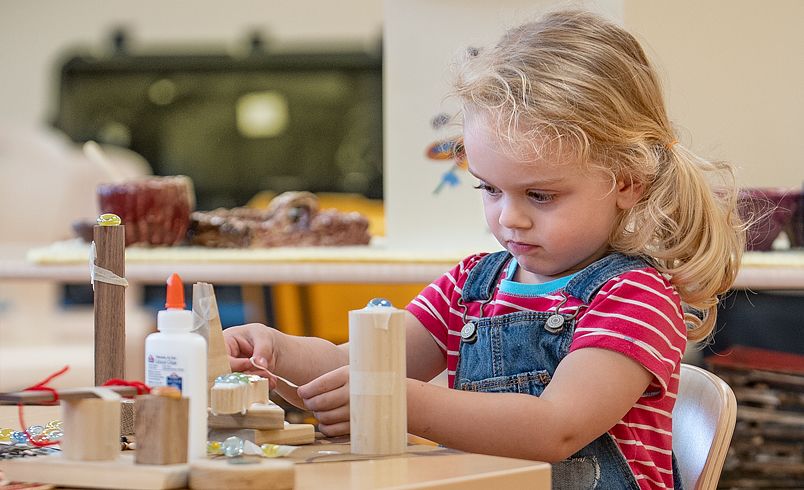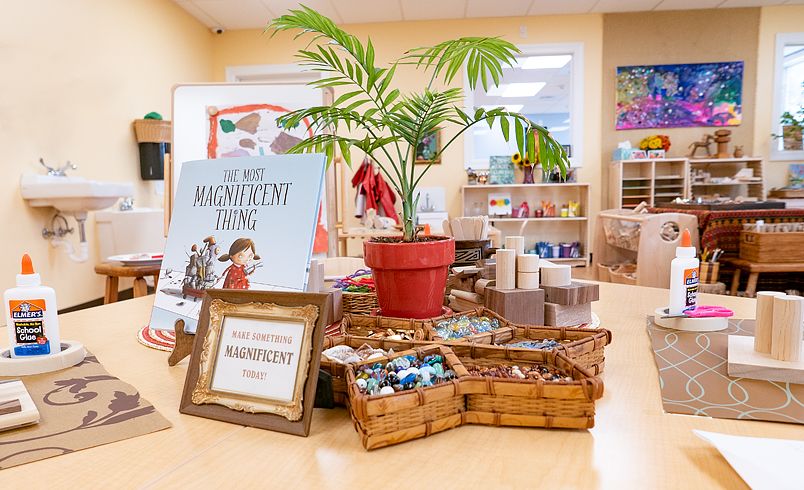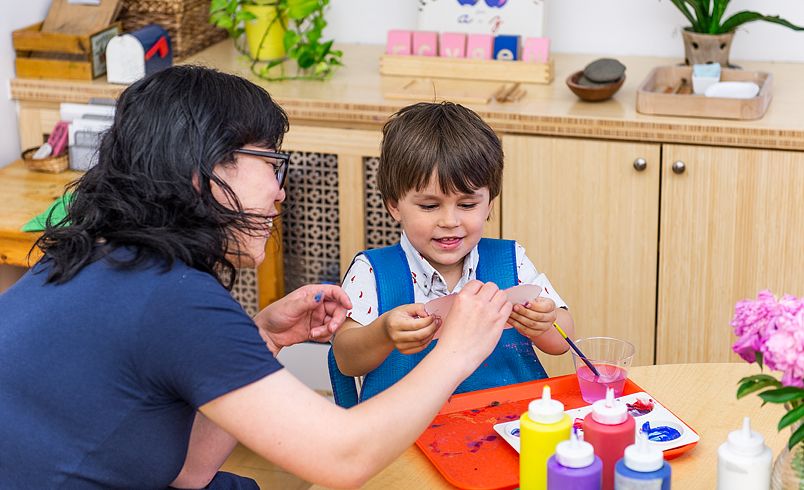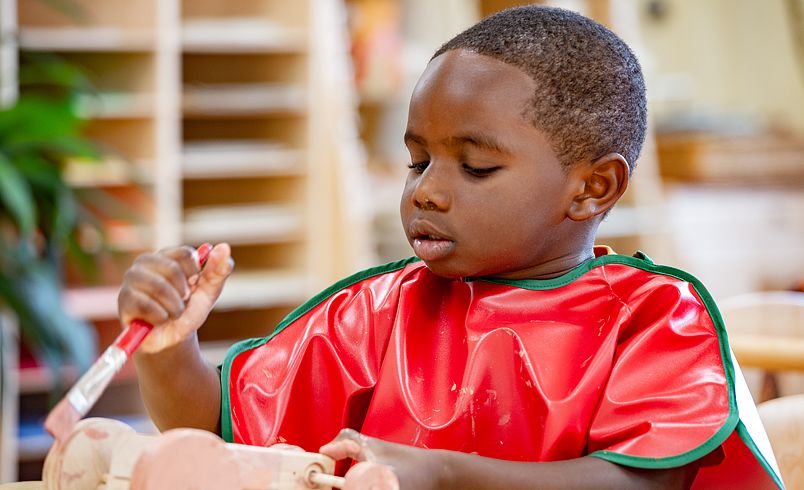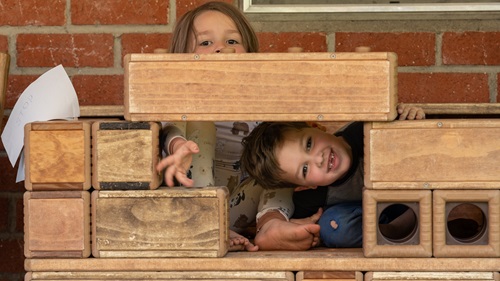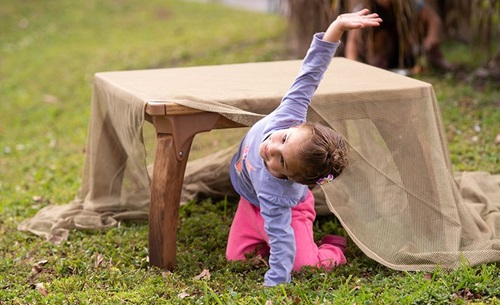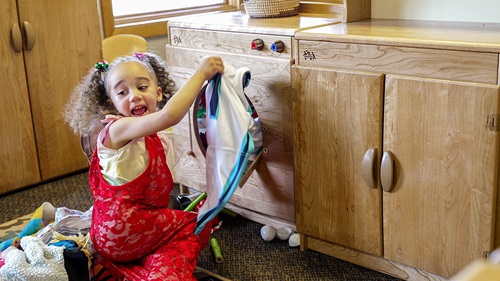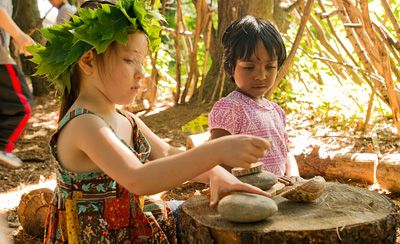Nurturing Creativity:
Preparing Young Children for the Challenges Ahead
| March 2019The young children in our classrooms today will be living and working in a very different world as adults. Their future environment will be filled with new information, expanded technology, and issues never faced before. Children will need to be creative thinkers, communicators, collaborators, and problem solvers to adjust to this changing world. Our young children need a place where they can gain these essential skills through meaningful and appropriate experiences so they will be ready for the challenges of the 21st Century.
Let’s investigate some of the ways we can foster creativity, set up a stimulating environment, and encourage creative thinking in our young children.
How do we foster creativity?
Creativity is the ability to think in different ways, adjust to changing information, and come up with unique and useful solutions to challenges. Creativity occurs in all aspects of daily experiences, throughout the curriculum. Creativity is a skill that can be encouraged and expanded when it is used in real situations and is valued as an important ability. As the world changes at a rapid pace, creative thinking is critical for progress and survival.
In the early years, young children have the amazing natural capability to be creative in their play, communication, and work with peers. This development is nurtured when young children have the opportunity to select some of their activities, choose materials from a variety of items, and have time to be persistent with their projects.
Experts and professionals who have studied the future have identified the skills that are needed in the 21st Century. One group has identified “the 4Cs” as essential skills for success and adjustment to the changing workforce. These 4Cs are: Creativity, Communication, Collaboration, and Critical Thinking. As new inventions and innovations change the work place, workers will have an increasing need to communicate effectively, collaborate with others, and generate more creative ideas. New challenges do not come with instructions but require the ingenuity of the workers to find the solution, test possibilities, and determine the best approach. If we continue to focus on memorizing and remembering factual information, we will not be able to adjust to this challenging world that includes limitless possibilities and often incorrect answers. Creative thinkers will be able to rise to the challenge, select possibilities, research the way it will work, and critically determine whether the idea is worth pursuing.
Creativity profoundly impacts the other “C”s: communication, collaboration, and critical thinking skills. Focusing on the creative process rather than the final product is vital for young children. When observing a 4-year-old painting, it is easy to recognize that the action of mixing the paint, the brush strokes, and the transformation that takes place are more significant to the child than what the picture may look like as a product, displayed on the classroom wall. This observation demonstrates the flexible thinking of the young artist as her ideas and methods adjust while she works on her painting. In this activity, she is given choices, opportunities to follow her own ideas, and time to work at a comfortable pace. Some of the elements of creativity that are often studied include: fluency of ideas (many ideas), flexibility (able to change possibilities), and original ideas (unique ideas). These components can be observed in young children and should be encouraged as they participate in meaningful activities throughout the day. Young children have the potential to develop in all four of the 4Cs if they are surrounded by an environment that values and supports these skills.
It is important to establish an environment where creativity, communication, and collaboration can occur in active learning situations on a daily basis. Each day young children should have the opportunity to choose experiences that interest them. Learning Centers allow children to determine where to work and what materials to use. Project work is another way the child can experience choosing, shaping, evaluating, and problem solving. Small groups are especially supportive of creative thinking since each child has an increased opportunity to influence the choices, suggest actions, and collaborate to find solutions. As children’s ability to make choices and communicate is strengthened, they become more creative and able to think independently.
Include varied and unique materials in your classroom areas that encourage creativity. Young children are drawn to the addition of novel materials such as a yard of sparkly fabric in blocks, or a feather duster in home living. The addition of these unique items demonstrates the creative teacher’s thinking and challenges the child to discover a new way to use this material in their play.
Open-ended materials allow the child to use the material in many different ways. A box of small tiles of different colors and sizes can be used in many different ways. The child can sort by color, stack them, create a design, or make patterns. There is not a best way to use the tiles—but rather many possibilities that encourage creative and flexible thinking. The creative teacher can pose questions or provide supportive comments, such as: “Can you use them another way?” “Can you and Jeremy work together to create a design?” “What are you going to do next?” “Wow, what an amazing idea!”
In the early years, young children develop language at amazing speeds. But communication requires more than the fluency of vocabulary. It requires abilities to express ideas, listen to others, and reach conclusions. To develop communication skills, children need many opportunities to speak orally but also require time to interact with others by taking turns being a speaker and a listener and thinking critically about what is being said. Working together in Blocks or participating in a joint project creating a mural, provide opportunities to share thoughts and ideas, or listen until you are confident enough to contribute. As they communicate and work together, they will be actively involved in collaborative experiences and refine their social skills. A quality communication and collaboration environment for young children is often loud, filled with talking, disagreements, and working together to find acceptable solutions.
Creative Teachers Inspire Creative Children
In a quality early childhood classroom, the critical element is a knowledgeable and a responsive teacher. Early Childhood teachers model creativity everyday as they interact with young children, establish an interesting environment, and support the ideas of young children. These teachers are flexible, willing to try new things, playful, and maintain a good sense of humor. It is interesting to note that these are all characteristics of creative individuals, and they are demonstrated frequently by early childhood teachers.
But for creativity to be nurtured in the children the teacher needs to recognize the elements needed to inspire and support the development of these young thinkers. It is important that a child’s unusual suggestions and choices are perceived and valued by the teacher who understands the importance of creative thinking. Children sometimes need help planning or explaining their thinking. Finding the balance to support children when they get stuck, but not taking over, is a difficult challenge. Observe first what is happening and then determine if you are needed or it will be best for them to work out their own solution. Posing questions or simply repeating a phrase of support may allow the child to find the solution and persist on the task. Some examples are: “Are you stuck? Do you want my help?” “Tell me about your work,” and, “What could happen next?”
In a creative environment, mistakes and failures are welcome as a part of the process. It is helpful to understand that many innovations and inventions have come after many mistakes and failures, before eventually leading to success. As we work with young children, it is helpful to convey the message that mistakes are OK. When you make a mistake, point it out to the children and communicate your acceptance of this unsuccessful try. You are not upset or discouraged by the event, but move on to other possibilities.
Summary
Today’s early childhood classrooms should be designed to encourage young children to think creatively, find ways to express their ideas, and have experiences that build their confidence in their growing problem-solving abilities. They need many opportunities to work with other children and gain experiences to collaborate. They need to have real experience that demonstrate the value, and respect for new and unique ideas. If these important abilities are nurtured early and supported as children develop, they will be beneficial for them today and in their future.
Additional Reading:
Isbell, R., & S. Yoshizawa 2017. Nurturing Creativity: An essential mindset for young children’s learning. Washington, DC: National Association for the Education of Young Children.
Contact Dr. Isbell at her website www.drisbell.com

